Ruins have always fascinated me. I remember a few year back when, as an intern at a local company in Mongar, I tried to clamber through the dense, leech-infested summer thicket to reach the old Zhongkar Dzong. Locals told me varying versions of haunting tales about the ruins, and its very name beckoned to my inner adventurer: Zhongkar Dzong – Fortress in the White Bowl; how mysterious. So fascinated was I that despite multiples warnings of there being snakes and forest beasts guarding the ancient fortress, I tried to make it to the ruins – to walk its crumbing courtyards and scale its decaying stairs to pay homage to its ancient glory. Alas, a strong bout of cold feet sent me scuttering downhill to the the safety of the settlements down below. I still think of it, though. Perhaps, one day, I will get to bask in its magnificence – fading, yet a valiant testimony to history of the place and its people.
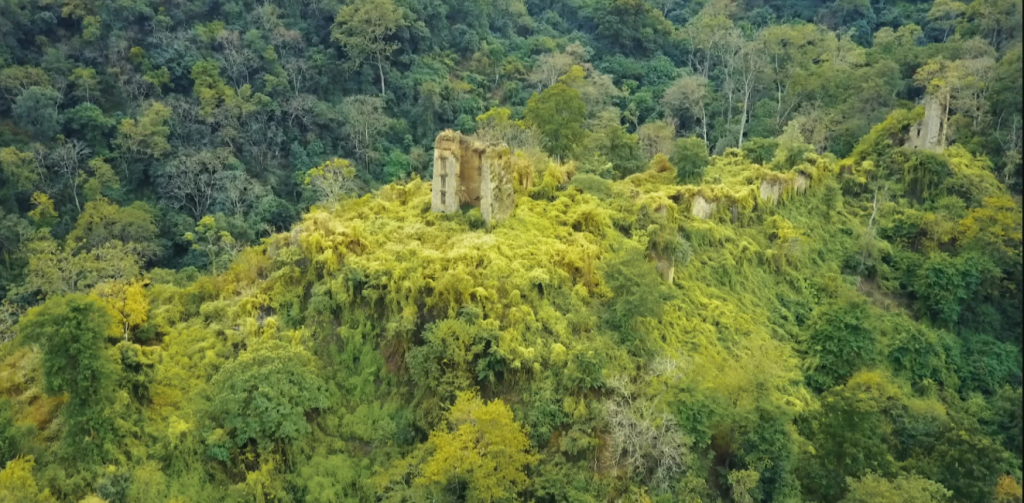
Closer to home, I am familiar with a few ruins – mundane, perhaps, compared to the majestic ruins of Zhongkar, yet equally enthralling. To me, they evoke a visceral mix of wonderment and poignancy for their stories lost to time. Imagine just what must have transpired behind those very ancient walls, their present remnants mere memories of their past wryly ringing across the years elapsed. What monumental Phobjib history has these stoic structures stood witness to? I wonder…
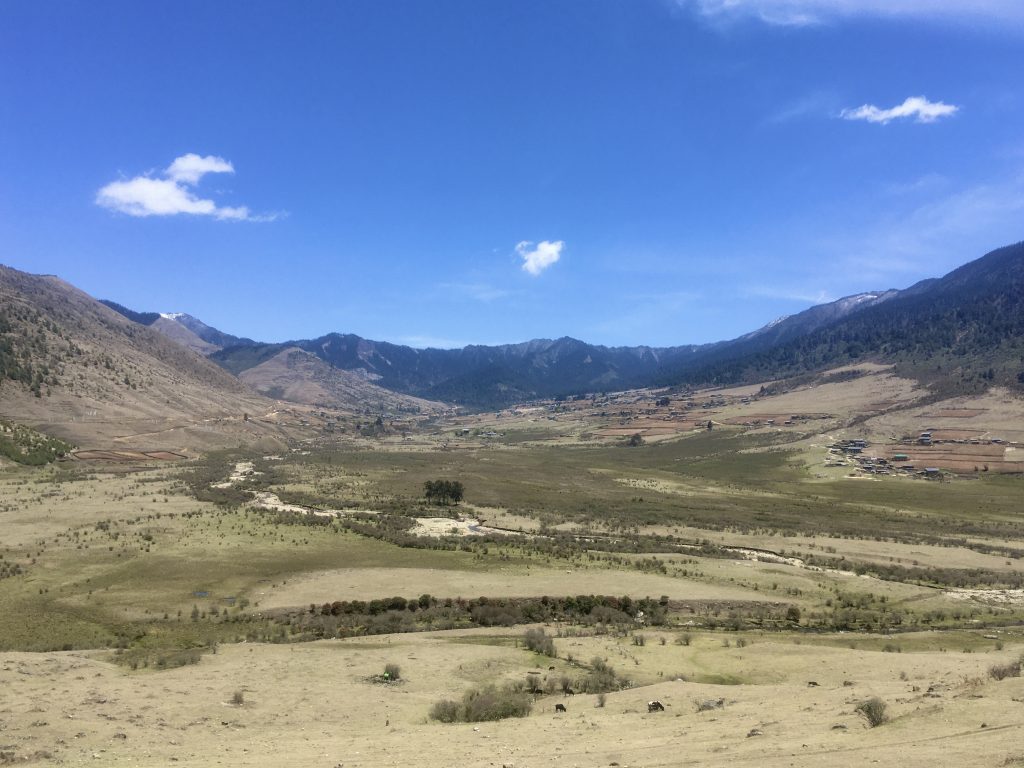
The Vale of Upper Phobjikha is one scraggy place. Unkempt bracken, jutting rocks and frothing brooks feature prominently, its hilly sides scarred streaks of pale brown by recent excavations to build more farm roads. Among its verdant fields and hanging hamlets, one scarcely stops to ponder its history, its folks, steeped, as it were, in the ins and outs of life itself.
Yet, smack in the middle of the Vale, towards the end of the serpentine fields of Nimphey Village, towered over by the hill of Norbi Ri, its proud oddity serenely masked by centuries of familiarity, stands an ancient ruins – ignored and enigmatic, its one true story perhaps lost forever to the ages.
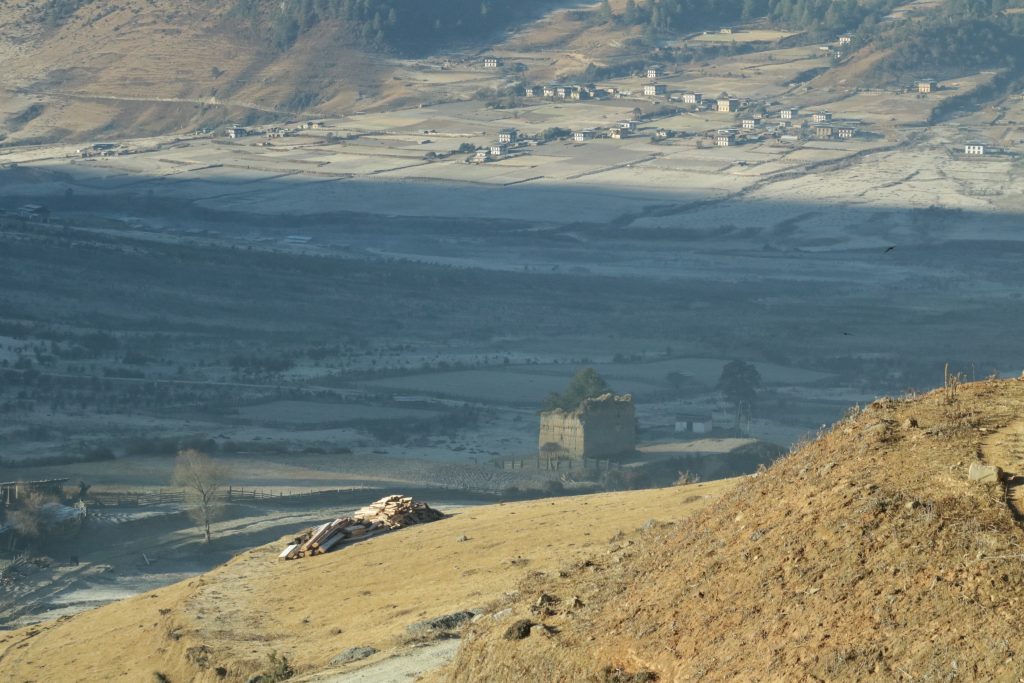
But maybe not. Locals seem to agree that a certain Lama Kathokpa built it as a temple very many years ago. This is reassuring, at least from a historical perspective. We know that back in the medieval ages when Bhutan was on the receiving end of zealous Tibetan Buddhist evangelism, many masters of different sects established monasteries and temples throughout Bhutan, then known as South Mon: The Southern Land of the Barbarians. Michael Aris, in this book, Bhutan, writes that in around the late 13th century, a certain Kathokpa lama Sonam Gyeltshen and his son built their centers in the Shar district. And although the toponym Shar is colloquially used to mean many places in Wangduephodrang, one gets a feeling of reassurance from reading Dr. Karma Phuentsho’s The History of Bhutan where he writes, “the people of Shar Valley have their summer homes in the highlands of Phobjikha, now well known for the endangered black necked crane.” If this is anything to go by, we can at least have a semblance of historicity about the ruins.
Legend has it that the Lama who presided over this now-in-ruins temple and the lama of the nearby temple at Lamai Zhuthri, literally, Seat of the Lama were on war-like terms. Lamai Zhuthri is today known as Ngenlung Drechakling after it was re-identified, perhaps hastily, as one of 8 ling monasteries founded by the Venerable Tibetan master Longchhenpa in the 14th Century C.E.
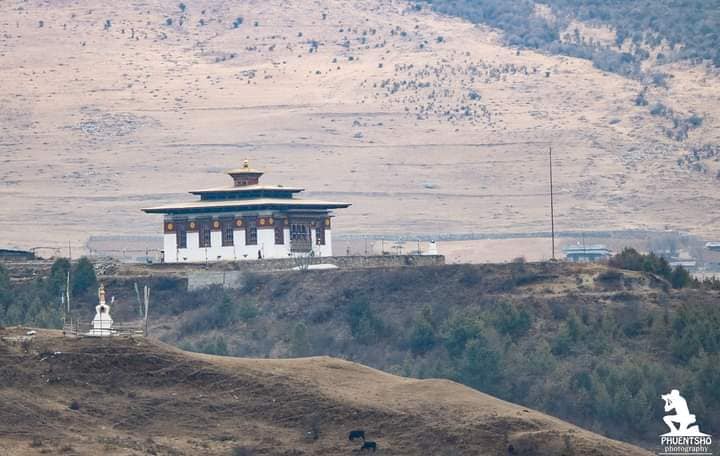
At any rate, the neighboring Lamas, perhaps due to some sectarian misunderstanding, were always on warring term. One day, the Lama of Nimphey Temple cut off the water supply to the Lamai Zhuthri Temple’s watermill. In retaliation, the latter is said to have blockaded the path that passed through its vicinity. Barred from using his usual path, the Nimphey Lama is said to have built his own path up across the Norbu Ri hill. After years, perhaps decades of conflicts, the two lamas are said to have fought a pitched battle near Lamai Zhuthri in a final show-down. Locals today say that the fascinating earthen mounds scattered on the hillocks to the east of the current Ngenlung Drechakling were built by the lamas on their sides as shields to defend their men from the enemy’s projectiles.
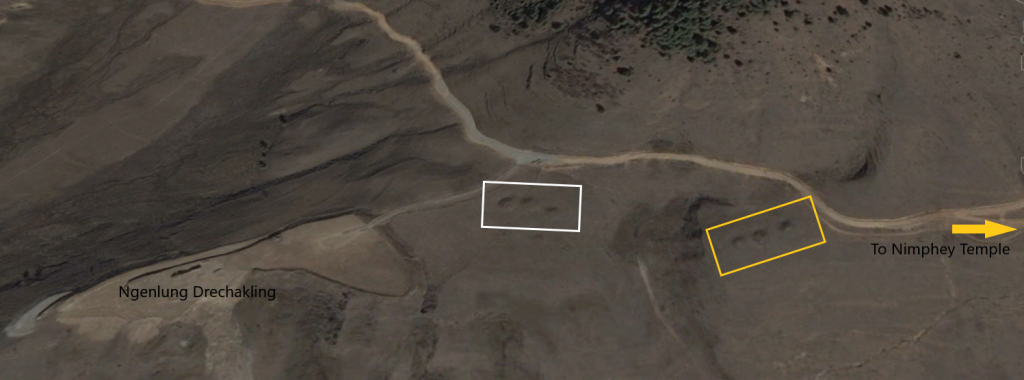
Whatever the outcome of the battle that day, the ending did not bide well for the two lamas. While the Nimphey Temple lies in ruins today, the fate of the Lamai Zhuthri Temple is even more enigmatic. We know that before the current nunnery was build in the later half of 2000s, there stood a complex of ruins at the site. In what can only be termed a well-intentioned tragedy, the site was bulldozed and a grand new temple built over it without any archeological excavation and documentation. Today, it is a truly hallowed institution – the only nunnery in a valley studded with many monasteries for monks. It is definitely a beautiful addition to the holy landscape of the place where many pious locals gather to offer butter-lamps and make prayers. And as everyone, I am awed and inspired by the modern marvel of the monastery.
Nonetheless, it does personally strikes a wry feeling of could-haves. A proper excavation of the site with systematic documentation and radio-dating could have been insightful towards establishing, once and for all, the history of the place.
Perhaps, not all is lost, however. In 2018, a Swiss team of archeologists excavated some of the earthen mounds near Lamai Zhuthri and made some impactful discoveries. Apparently, the first parts of the structures were build as far back as late 10th Century BCE! The masonry structures as well as pieces of artefacts found buried in the nondescript reveal both a fascinating history and a gaping chasm in our understanding of the local history. And while it is possible that the two warring lamas of Nimphey and Lamai Zhuthri did employ these humble earthen mounds as improvised battle “trenches,” it is now far more certain that they speak better of the continuous and ancient history of Phobjikha and the Lagabs – its people.
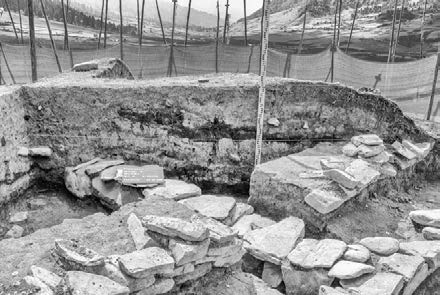
This leaves us with a hopeful future: equipped with modern tools and knowledges of archeology, how can we learn the history of the place from its pristine ruins? The Nimphey ruins is certainly promising. Its crumbling walls contain much organic matter we can date using radio-carbon dating, and I am sure that beneath the heaps of dirt piling ever higher inside its walls, there lie promising cues and evidence of a vibrant past – a past when it ruled supreme in the Vale of Upper Phobjikha – the Casterly Rock of the place, as it were.
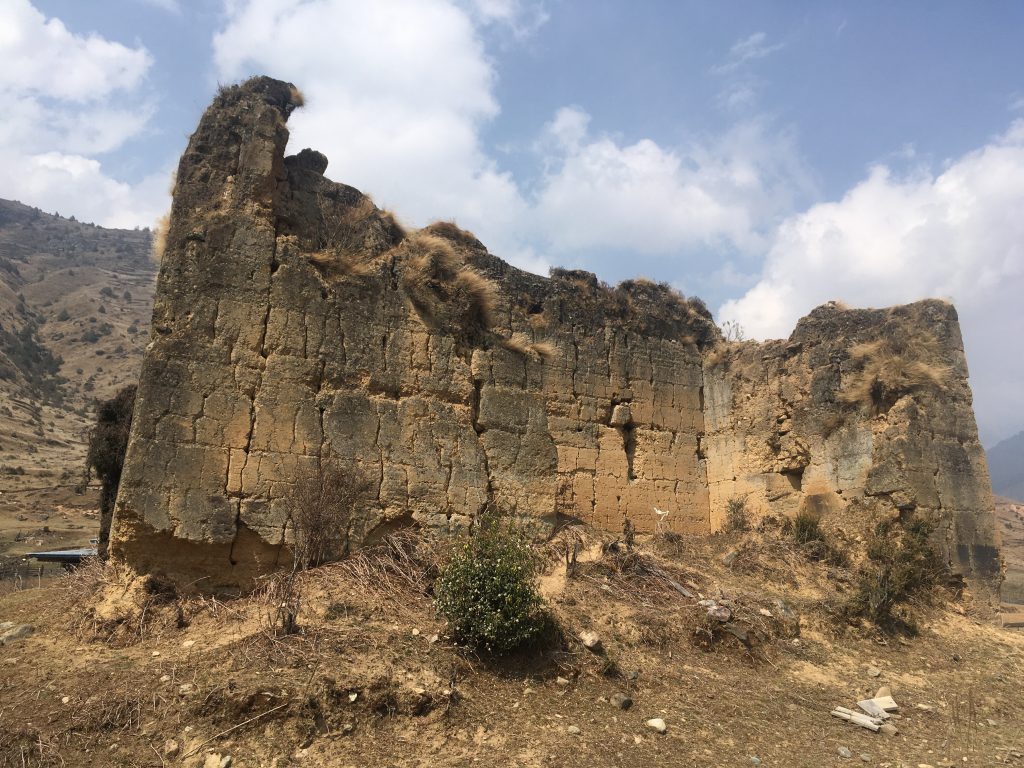
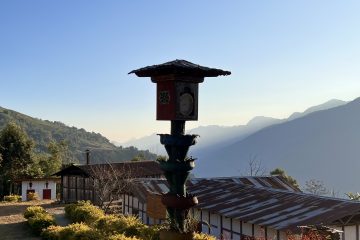
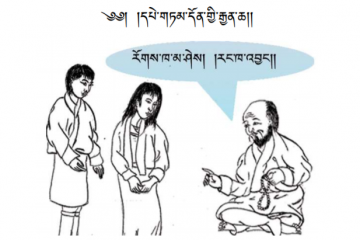
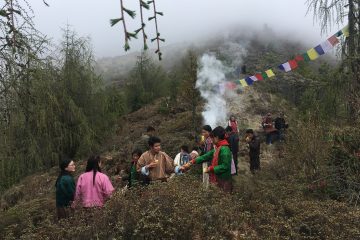
0 Comments